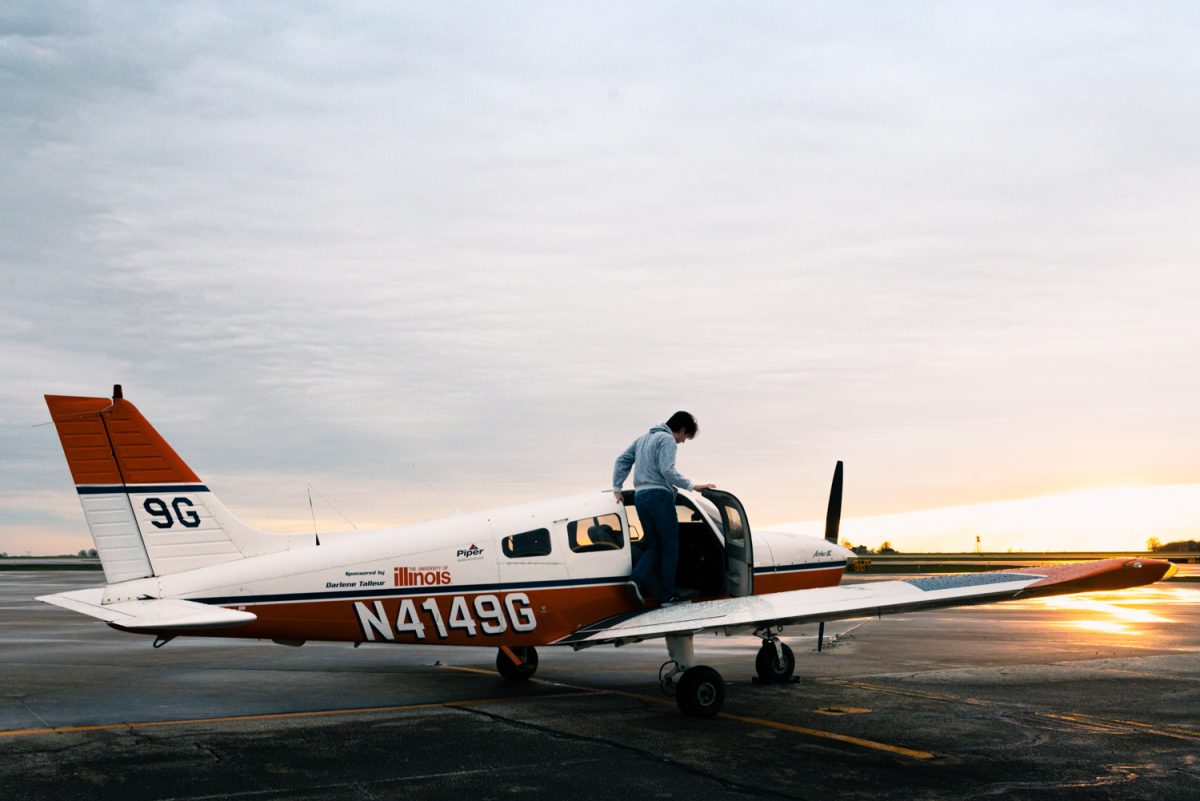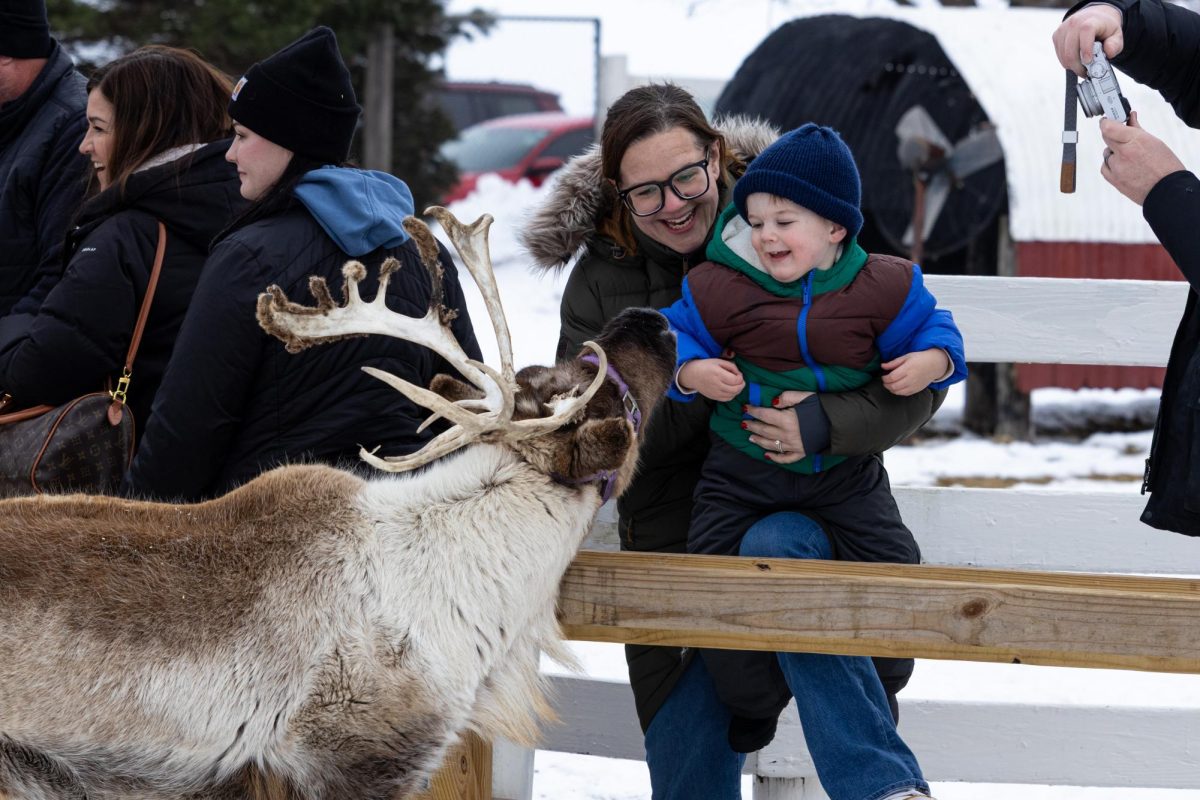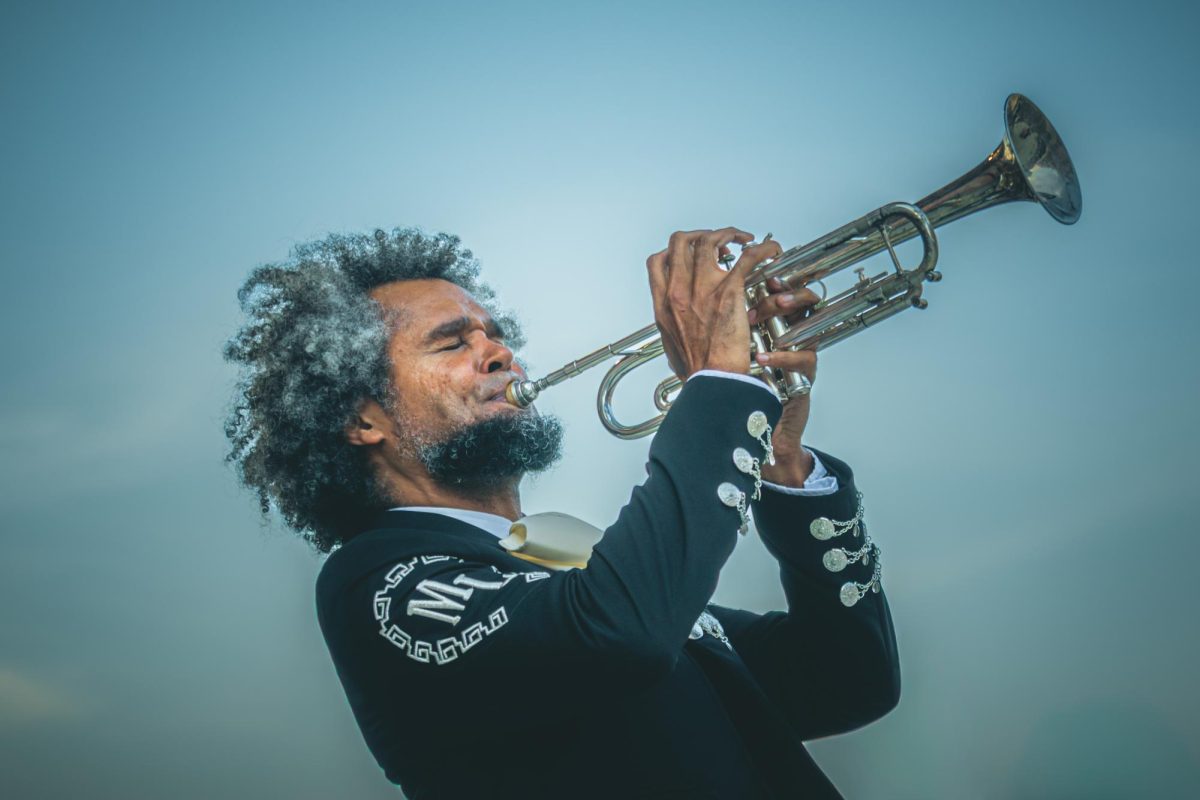At Willard Airport, students at the Institute of Aviation at Parkland College log flight hours by mastering takeoffs, landings and cross-country flights while also learning the procedures and regulations every pilot needs to know.
Aspiring pilots at Parkland College begin flying planes as early as their first semester, practicing multiple times a week.
Parkland’s aviation program is a Restricted Airline Transport Pilot-approved school. This means the Federal Aviation Administration authorizes it to certify graduates with fewer than 1,500 hours of flight time to get an R-ATP Certificate, which is required to work for an airline.
When student pilot Will Kyriazakos flew a plane for the first time, he was hesitant about making mistakes and constantly asked his instructor questions. But with each flight, his confidence grew. Just a few months after his first flight, he would fly solo for the first time.
“It’s a cool experience, because your instructor is not there, and you’re like, ‘I am flying an airplane by myself, and if I screw up, it’s all on me,’” Kyriazakos said.
Get The Daily Illini in your inbox!
As students go into advanced classes, flight distances become longer. Andrew Shultz, another student in the program, is currently earning his instrument rating. This rating is a qualification that allows pilots to fly in the clouds when visibility is limited and weather conditions are poor.
Last week, Shultz took a four-hour flight route to St. Louis with a flight instructor, Charlie Evans. They flew over the arch, saw the Budweiser sign and caught a baseball game happening downtown.
“Getting to St. Louis was on my bucket list,” Shultz said. “I grew up in that area, so it’s cool to see it from a different angle that you don’t usually get to see.”

Everyone pursues aviation for different reasons. Some pilots want to work for the airlines because of the financial compensation, while others prefer to fly cargo or corporate jets. Some people just want a license to fly recreationally.
Students at the aviation school have diverse backgrounds. In Shultz’s classes, there’s a National Guardsman, a massage therapist and someone from the medical field.
“Everyone has a really different background,” said Micah Hortega, a certified flight instructor at Parkland. “But we’re all brought together by some awesome way (where) we can share these experiences.”
While flying a plane is exciting, aviation school is more than just learning how to fly. Students need to learn complex aviation knowledge in ground school.
To earn a particular certification, they need to pass check rides, which include an oral exam and a flight portion. If students want multiple certifications or ratings, they usually need to pass several check rides for each one.
Because of how challenging aviation school can be, Evans described the passion needed to push through the stressful courses and exams.
“I’d say the main reason people might drop out is it’s too difficult,” Evans said. “Aviation will love you if you love aviation, if you have a passion to put in the work, you’ll get rewarded.”
With the school’s small class sizes, students can easily connect and relate to eachothers experiences and struggles in the program. Shultz said that the aviation institute’s community is very supportive.
“It’s not like a normal college class where you’re on your own and you don’t really care about everyone around you if they pass or fail,” Shultz said. “Here, you don’t want to see each other fail.”
When Shultz began the program, there were only three people in his class. It wasn’t until he went into more advanced classes that he found himself in class sizes of around 18 students. Last semester, Evans said their introductory classes had grown to capacity, with 48 students.
Evans credits the program’s increase in students to the media’s coverage of the nationwide pilot shortage, which means there aren’t enough pilots in the industry to fly planes. This demand for pilots has inspired people to pursue the profession.
Champaign County generates around 2,700 passengers per day, but not many use Willard Airport because there aren’t enough flights. 76% of regional airports have reported service cuts and flight reductions.
Micah Hortega was a student at Parkland and has become a certified flight instructor at the same institute. When he was a student, he noticed people would attend class and leave without bonding with other students. Now, with the program growing and the development of the school’s aviation club, The Flying Cobras, it has become a more tight-knit community.
“No one leaves the building right after class,” Shultz said. “After flying, there’s always a group of people standing somewhere having fun.”
The Flying Cobras were officially recognized by the school last month, with dozens of students attending their first meeting. They plan on inviting guest speakers to talk about aviation-related topics and hosting workshops to build resumes geared towards airlines and other pilot jobs.
Although the path to becoming a pilot can be demanding, Kyriazakos believes that with the support of Parkland’s community of pilots and his passion for flying, becoming a pilot for a major airline is too big of a reward to quit.
“I would just love to be an airline pilot because why wouldn’t you?” Kyriazakos said.









